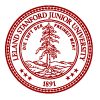Alain de Cheveigne on cleaning up brain data for analysis and decoding
Date:
Fri, 10/04/2019 - 10:30am - 12:00pm
Location:
CCRMA Seminar Room
Event Type:
Hearing Seminar 
Brain signals as measured by EEG, MEG or even ECoG are inherently noisy. Not only are there only a few dozen sensors to measure billions of different neural sources, the electrical environment can change during an experiment. One would like techniques that can pull the signal out of the noise. This can be done with smart forms of noise control, de-trending and signal averaging.
Alain de Cheveigne will be at CCRMA on Friday to discuss a panoply of techniques to enable you to find the signals you care about. This seminar will be of interest to those that work with EEG, as well as (non-stationary) signal processing folks.
Who: Alain de Cheveigne (CNRS in Paris)
What: Cleaning up brain data for analysis and decoding
When: Friday October 4th at 10:30AM
Where: CCRMA Seminar Room
Why: We all want more signal and less noise
EEG signals might be noisy, but not Alain’s work. Come find out more.
Abstract:
Bio: Alain de Cheveigné’s initial training was in Maths, Physics and EE. He has worked on speech signal processing (pitch and spectral estimation), auditory modeling and psychophysics (pitch perception and sound segregation), and more recently, brain data analysis. He recently coordinated the European project COCOHA (cocoha.org) that aimed to develop a brain-controlled hearing aid. He works for CNRS and is affiliated with the Ecole Normale Superieure and University College London.
FREE
Open to the Public

